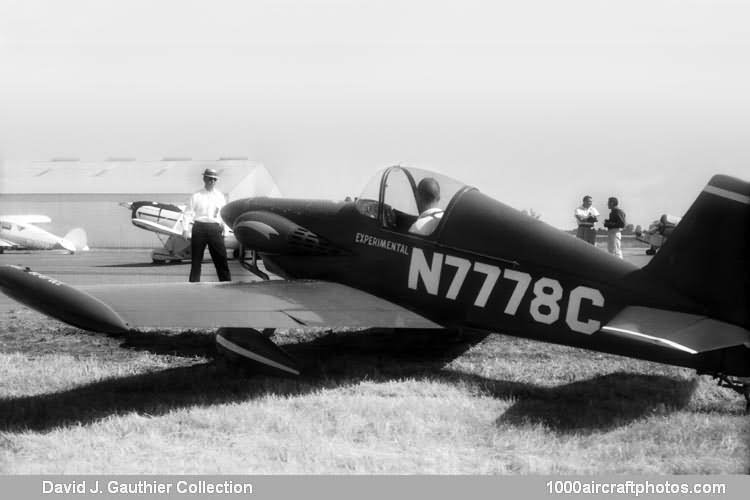09/30/2012. Remarks by Johan Visschedijk: "The origins of this aircraft lay in the Formula One racers designed and built in his spare time by David E. Long, Chief design engineer with Piper. The first was the 85 hp Continental C-85 powered Midget Mustang of 1947, registered N9N (c/n 1) and named "Mammy". At least ten more Midget Mustangs were built, including two by Long.
In 1959 Robert W. Bushby of Dolton, Illinois, also built one, using the drawings, jigs and certain components produced by the then late David Long. Bushby flew his Midget Mustang on September 9, 1959. Bushby also acquired the rights for the Midget Mustang and under the designation Bushby MM-1-85 Midget Mustang he produced kits and plans for amateur builders, and for this purpose he formed Bushby Aircraft at Glenwood in 1964.
This initial model was suited for engines in the 90-130 hp range, often with modifications made by the builders, sometimes including a fixed tri-gear. During the 1960s, a batch of ten of the MM-1-85 was built by San Antonio Aviation Co, but these aircraft were classified as homebuilt. The SM-1-85 was a variant reworked to fit a retractable landing gear.
The MM-1-125 was a reinforced variant for heavier engines in the 125-160 hp range and the 135 hp Lycoming O-290 series was the most-widely used engine, and being built with a fixed tail wheel or tri-gear landing gear, as well as a retractable main gear.
A slightly larger two-seat version was the M-II Mustang II which was developed by Bushby and first flown (registered N1117M) in 1966, the M-II became even more popular. In 1992 Chris Tieman formed Mustang Aeronautics at Troy, Michigan, and took over the Mustang I and Mustang II designs. Mustang builder/owner Don Caskey designed an improved nose gear leg, which became standard on the factory stock unit.
The pictured aircraft was involved in a mishap at Oceanside, California, on March 18, 1973. While landing with unfavorable wind conditions, the pilot failed to maintain directional control during landing roll and the aircraft swerved left of the runway, and due to soft ground nosed over. The pilot escaped serious injuries, but the aircraft sustained substantial damage, its fate is unknown."
